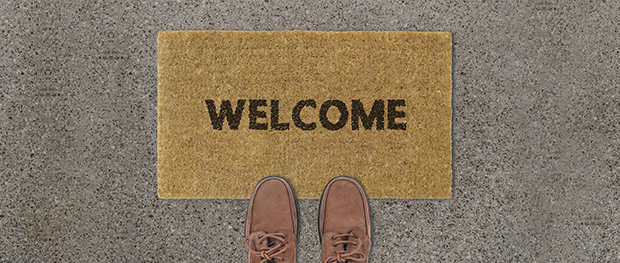
Onboarding a New Associate
No matter how long a dentist has been practicing, a new office brings many unknowns. What materials does the office use? What duties do the assistants have? How many hygiene columns need to be checked? Are the hand pieces electric or air-turbine? What burs are available? What endo system does the office use? What implant system does the office use? Does the office scan or impress for crowns? What note templates are available? What labs and referrals does the office use? These unknowns and the way they are answered can make or break a new relationship. I have three main suggestions on what to give a new associate to help make the transition easier and the relationship positive: a working interview, a handbook and time.
My first suggestion is a working interview, which can help both parties decide if they even want to start a relationship. A working interview gives both parties the opportunity to see and assess the other. Does the interviewing dentist like the office, the location, the commute, and the staff? He or she should ask about materials used and procedures offered at the office. Do the staff, the owner dentist and the patients for that day like the interviewing dentist? They should discover what procedures the interviewee is comfortable doing, while assessing the way he or she speaks to patients and creates treatment plans. A working interview gives everyone a chance to meet, to assess personalities, and to get an overall feel for each other. Once the interviewing dentist is hired as the new associate, the next two suggestions come into play.
My second suggestion is to create a handbook. This does take time and effort by the owner dentist, but it can make the biggest difference in whether the new relationship is successful or not. In a handbook, you can layout your team goals, the materials used at the office for each procedure, the responsibilities the different team members have, the flow of the office from the time a patient walks in to when they leave, the referrals and labs used by the office, and the expectations and responsibilities of the new dentist. After being in the profession for a couple of years, we tend to know how long a class II composite or a crown prep will take us. What we don’t always know is the flow of the office we are walking into. For example, some assistants make temporary crowns while others do not, so asking a new associate how long they need for a crown prep appointment leaves them guessing on key points — who’s making the temporary? Are we impressing or scanning? Are finances and consent forms discussed, during chair time or before the patient comes in? Laying out the procedure and the flow of an appointment in a handbook will not only clarify what the new dentist’s responsibilities are for that given procedure, but it will also help your front desk schedule that appointment’s allotted time correctly.
I worked at one office where finances and consent forms were discussed and signed over the phone and email before the patient came in for their appointment, while another office used the first 45 minutes of chair time to go over all of it. In the first situation, the patient’s chair time was completely mine, while in the latter, I did not start numbing until 45 minutes after the patient was seated. In these two scenarios, a restorative appointment will have drastically different time spans, but your new associate may not know that when asked how long they need for an appointment. My suggestion instead is to ask the new associate how long from numbing to polishing for a class II filling or from numbing to prepping for a crown does he or she need, rather than asking how long the associate needs the appointment to be. This will allow your front desk to build the schedule appropriately for that dentist and give the new relationship a positive start versus a stressful, running behind one.
My third suggestion is to give the new dentist time, and it really can make all the difference. Try not to pack the schedule in the associate’s first week. Yes, it is good for the associate to see the normal flow of the office, and I understand the desire of the owner dentist to see how the new associate works and with what speed, but with a new hand piece, new burs, new setup, new assistants, new materials, etc., the new dentist will not be at their regular speed when prepping a crown or doing a filling. None of us want to fall behind in our schedule but especially not in our first week of work at a new office. Adjusting to a new situation, flow, staff, materials, and patient base takes time so giving the new associate that time can greatly increase the opportunity for success.
Most owner dentists want the hiring process to be smooth and the relationship to work, while most associates want a positive start and an office to call home. The questions we ask each other and the answers we give at the beginning can make or break the entire relationship, and maybe a working interview, a simple handbook and the gift of time can help provide a positive experience for both parties. So keep an open mind, stay calm, and drill on.

